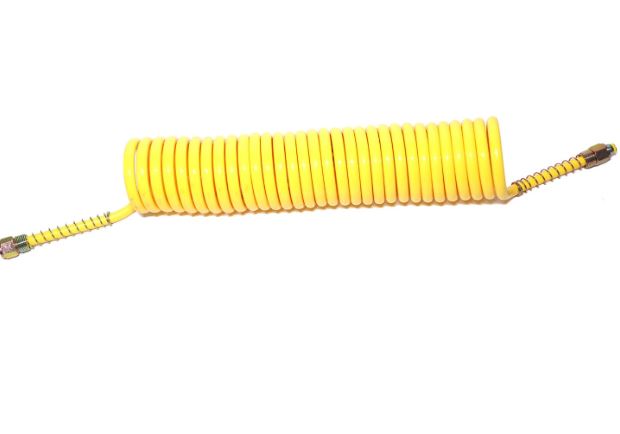air hose rubber vs pvc
Air Hose Rubber vs PVC A Comprehensive Comparison
When it comes to selecting an air hose for your workshop, garage, or industrial application, the choice often boils down to two primary materials rubber and PVC (polyvinyl chloride). Each material has its own set of characteristics, advantages, and disadvantages, which can significantly impact the performance and usability of the air hose. Understanding these differences can help you make an informed decision based on your specific needs.
Composition and Properties
Rubber hoses are typically made from natural rubber or synthetic rubber compounds. They are known for their flexibility, durability, and resistance to heat and abrasion. Their construction allows them to handle higher pressures and maintain performance over a wide range of temperatures, making them ideal for demanding applications.
On the other hand, PVC hoses are crafted from polyvinyl chloride, a plastic material that is generally lighter than rubber. While PVC hoses can be more rigid and less flexible than rubber options, they shine when it comes to cost-effectiveness and availability. However, their ability to withstand extreme conditions is often inferior to that of rubber hoses.
Flexibility and Handling
One of the most significant distinctions between rubber and PVC air hoses is their flexibility. Rubber hoses are known for their superb flexibility, not just at room temperature but also in colder environments. This flexibility allows for easier handling, coiling, and storage, making them user-friendly, especially in tight spaces.
Conversely, PVC hoses tend to be less flexible, particularly in colder conditions. When exposed to low temperatures, PVC hoses may become stiff and challenging to maneuver, which can be a significant drawback for users working outdoors or in unheated environments.
Temperature and Pressure Ratings
When it comes to extreme temperature and pressure applications, rubber hoses often have the upper hand. They can typically handle higher pressures (up to 300 PSI or more) and better withstand heat, making them suitable for high-performance settings like construction sites or automotive shops.
air hose rubber vs pvc

PVC hoses, while they can handle moderate pressure (typically around 150 PSI), may struggle in high-temperature environments. Prolonged exposure to heat can lead to reduced performance, and in extreme cases, degradation of the material. Therefore, while PVC hoses are adequate for lighter tasks, their reliability diminishes under more intense conditions.
Cost and Durability
In terms of cost, PVC hoses tend to be more affordable than their rubber counterparts. This price advantage makes them a popular choice for casual users or those who do not require heavy-duty performance. However, while they may be cheaper upfront, the durability of PVC hoses can be a concern. They are more prone to punctures, abrasions, and wear over time, which can lead to the necessity of replacements sooner than expected.
Rubber hoses are generally more expensive but provide better long-term value. Their higher resistance to wear and tear means they can last significantly longer under rigorous use, ultimately saving money in the long run by reducing the frequency of replacements.
Environmental Considerations
It’s also worth noting environmental considerations when choosing between rubber and PVC hoses. Rubber is generally considered more environmentally friendly, being a natural material. In contrast, PVC production has a larger environmental footprint and poses challenges regarding disposal due to its synthetic nature.
Conclusion
In conclusion, the choice between rubber and PVC air hoses largely depends on your specific needs and intended applications. If you require flexibility, durability, high-pressure ratings, and superior performance in extreme conditions, rubber hoses may be the better choice despite their higher cost. Conversely, if you are looking for an economical solution for light-duty tasks in moderate conditions, PVC hoses can serve you well.
Ultimately, understanding the differences between these materials will aid you in making a decision that aligns with your operational requirements and budget considerations. Whether you prioritize cost, durability, flexibility, or temperature resistance, your choice of air hose material can significantly impact your efficiency and the longevity of your tools and equipment.
-
Top Quality Oxy Acetylene Hoses for Sale Fit for Welding DemandsNewsJul.28,2025
-
The Future of Pneumatic Air Tubes in IndustryNewsJul.28,2025
-
Superior and Reliable LPG Hose Pipe Solutions for Every NeedNewsJul.28,2025
-
Exceptionally Durable and Versatile Premium Braided PVC TubingNewsJul.28,2025
-
Best Adapters for Connecting Garden Hose to PVC Pipe ConnectionsNewsJul.28,2025
-
The Essential Role of LPG Hoses in Safe and Efficient Gas DistributionNewsJul.16,2025














